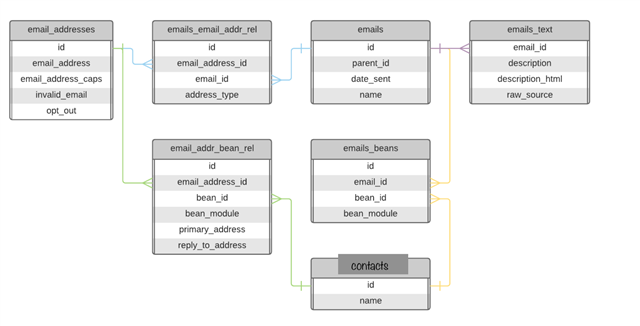There does not seem to be a way to create a report that shows Emails visible in the Email subpanel of a Contact. We currently send emails to Contacts that we archive by including the Email Archive email address (SNIP) in the BCC. We observe that the email shows up in the Contact's Email subpanel due to the matching of email address in email and Contact. When writing a report on the Contact module that shows emails, the emails that are archived this way do not show up on the report. We also tried via the Email module, but haven't found them that way either. We believe this is a "feature" of the implicit linking of the email archiving service. Thanks for any help.

